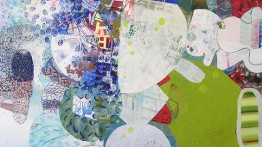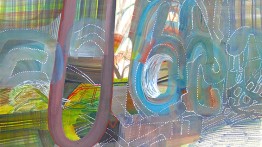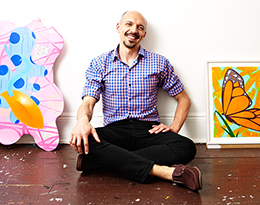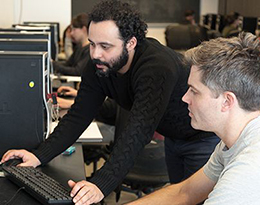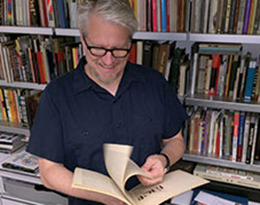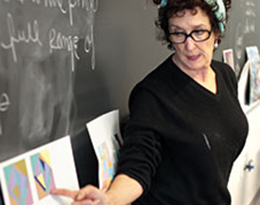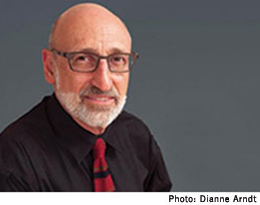News & Blog: Josette Urso
|
Teaching in The Cooper Union’s Continuing Education program since 1998, painter Josette Urso translates her own painting method into exciting exercises for students – some experienced painters, others new to the form. “My approach involves ‘moment-to-moment’ extrapolation governed by intuitive leaps of scale, color and wayward geometry,” she says. She constantly moves around her canvas to discover what is unfolding, instead of imposing a fixed plan. Similarly, she encourages her students to discover their subjects, not force them. When teaching, she says, “ we work from observation, memory and invention. It’s high energy and very intuitive, and works best when students don’t have preconceived ideas.” Alternating from semester to semester, Ms. Urso’s courses include Watercolor and Abstraction, Introduction to Watercolor as well as Watercolor Figure and Watercolor Landscape. She also teaches a Collage to Painting Workshop where students make collages, sculptures and desktop installations not as ends in themselves but as means to discover what and how they would like to paint. This summer she will be teaching the Introduction to Watercolor Workshop. She points out that this watercolor workshop is as much a course in color theory as painting. Projects start with a monochrome palette and then extend to include analogous and complimentary color and finally a full palette of color. “Our investigations are open-ended and exploratory and there’s a lot of information that happens very quickly in the watercolor class,” she says. It’s not so much about representation as about painting and finding ways of getting at imagery.” Ms. Urso, whose paintings are essays in balancing color in the midst of chaotic, dynamic form, says that teaching at Cooper has been extraordinary because of the great diversity of students. She has taught aspiring painters and seasoned artists of different ages and professional backgrounds. She also notes that many of her students have not come from the visual arts at all: some have been book editors, writers and academics. “I always get an amazing mix—the youngest might be applying to art schools, others are foreign students just getting into the culture of the city.” Ms. Urso has remained friendly with many of her former students, and finds that they have created a network for information about exhibitions and events in the art world. “Sometimes students introduce me to new materials”, she says, describing how a student’s use of a Japanese brush pen years ago influenced her to try a similar tool, which she herself still uses today. “Teaching keeps you on your toes and affects you in ways you can’t even know until years later.” Ms. Urso’s solo exhibition, Along the Way, opens at Kathryn Markel Fine Arts (529 West 20th Street) in Chelsea and runs from May 12 - June 18, 2016. |


